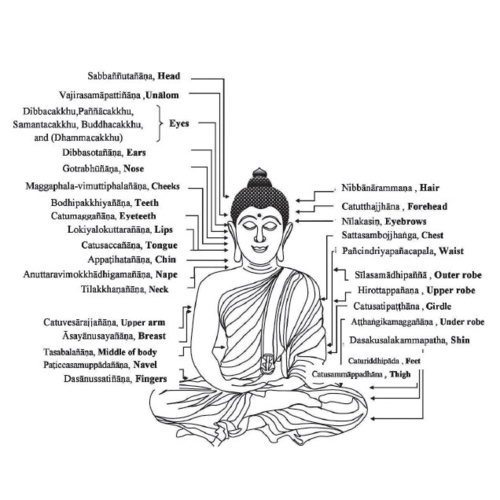Research & Article

The Dhammakāya Text Genre and Its Significance for Tai-Khmer Buddhism and Modern Marginalisation
By Woramat Malasart
Published on 8 May 2024
Philosophy and Religion
Location of original sources
Journal of the Siam Society (JSS) Vol. 109.2 (2021)
Download
The Dhammakāya Text Genre and Its Significance for Tai-Khmer Buddhism and Modern Marginalisation
The Dhammakāya text genre is a corpus of documents, such as manuscripts, inscriptions and printed books, that shares the same core Pāli passages called “Dhammakāya.” The core Pāli Dhammakāya identifies the knowledge and qualities/virtues of the Buddha with physical attributes of his body. The Dhammakāya text genre can be found in Central Thailand, Northern Thailand and Cambodia, and played a significant role in a range of core Theravada practices, including meditation, Buddha-image consecration (buddhābhiṣeka) and individual recitation on the part of intellectuals and ordinary Buddhists in those regions. The earliest extant version of the Dhammakāya text genre can be dated back to the Ayutthaya period (1350-1767). Today, the Dhammakāya text genre is not well known in Central Thailand, but is still used in Northern Thailand and Cambodia during buddhābhiṣeka, as well as the ritual of installing the Buddha’s heart into a Buddha statue or a chedī. The Dhammakāya text genre disappeared from Central Thai practice during the Fifth Reign of the Rattanakosin Era when the royal chanting curriculum was reformed under Supreme Patriarch Sā in 1880. Around this time, Siam’s Tipiṭaka was also revised in 1893. In this article, I examine a corpus of documents belonging to the Dhammakāya text genre and its different functions, revealing how a single genre can, in fact, fulfil functions that we may have thought would be at opposite ends of the practice spectrum: from meditation, on the one hand, to consecrations and protective chanting on the other. I then conclude that the disappearance of the Dhammakāya text genre from Central Thai practice is further evidence for the suppression of Siam’s “boran”, or pre-reform, Buddhism in response to modernist concerns about canonicity and textual authenticity.